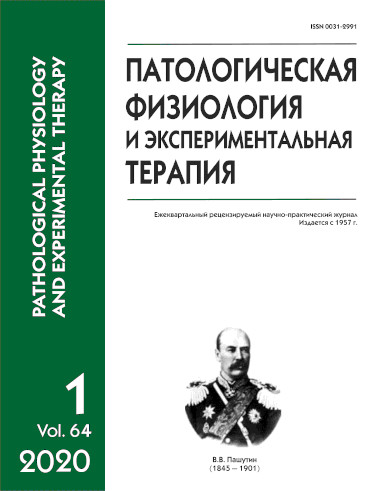The vaginal microbiome and the spectrum of gaseous signal molecules released by lactobacillus in women with habitual miscarriage
Abstract
Background. The issue of habitual miscarriage is very important at the present time. Prevalence of this pathology is approximately 2‒5%. Infection considerably contributes to the pathogenesis of habitual miscarriage. The etiology of infection has been widely discussed in the literature. Aim. To study the vaginal microbiome of healthy women and women with habitual miscarriage as well as the spectrum of gaseous signal molecules released by lactobacillus, which is essential for maintaining healthy vital activity. Method. Samples of vaginal material were collected with a sterile swab on a polystyrene stick from an area of 1 cm2; the samples were delivered to the bacteriological laboratory within 2 hours. Facultative anaerobic and aerobic bacteria were isolated using the following nutrient media: Endo agar for enterobacteria; mannitol-salt agar (M118) for staphylococci and micrococci; BairdParker agar for detection of lecithinase activity, etc. Cultivation was performed at 37°C for 24‒48 hours. The number of colonies was expressed in l g CFU/ml. Production of gaseous signaling molecules (H2, O2, N2, CO, CH4, CO2, NO, and H2S) was determined using a Chromatech Crystal 5000.2 gas chromatograph. The amount of gases was measured in ppm. Results. The major vaginal microbiome spectrum of healthy women (19‒23 years) was represented by normal microbiota bacteria of the genera Lactobacillus, Enterococcus, Bifidobacterium, Peptococcus, Peptostreptococcus, Bacillus, and Staphylococcus (epidermal strains). Opportunistic fungi of the genera Candida, Bacteroides, Staphylococcus aureus, Streptococci, Micrococci, Weylonella, Gardnerella, and Actinomycetes were found rarely. Lactobacillus strains were isolated from 91% of healthy women. Lactobacilli produced most of CO2, CO, and NO molecules. Dysbiotic vaginal microbiome was found in non-pregnant women with a history of habitual miscarriage. These patients also had decreased production of CO and NO, and increased production of H2S and CH4. Conclusion. The study demonstrated suppression of the immune response in this category of patients. Dysbiosis requires correction prior to pregnancy.






